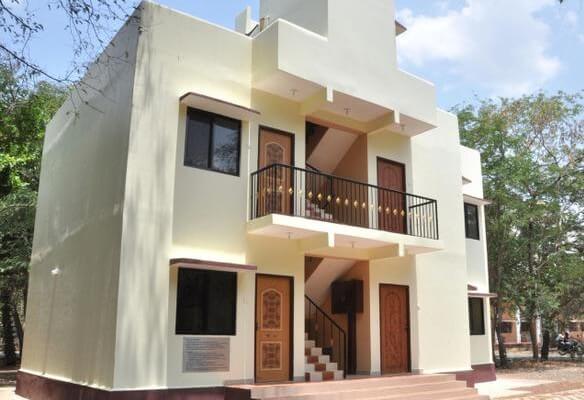The researchers at the Department of Civil Engineering in IIT Madras decided to put these two numbers together to come up with a brand new idea — a housing construction technology that combines gypsum with glass fibres to manufacture lightweight pre-fab building panels.
Called Glass Fibre Reinforced Gypsum or GFRG panels, they enable substantial savings in the use of conventional building material. For instance, cement usage can be reduced by almost 50 per cent, steel by 35 per cent, and sand by a staggering 76 per cent.
The entire building including walls, slabs, staircase, and parapet walls can be made using GFRG panels, thus entirely eliminating the need for burnt clay bricks.
This also means that labour time is reduced by about 65 per cent and construction time by 82 per cent. The panels come with a great surface finish, which eliminates the need for plastering. Overall, you can reduce construction costs by one-fourth with this technology.
Research has found gypsum to be a durable material, and it is already heavily in use as partition walls. Experts predict that a building made of GFRG panels can have a life span of 60 years. A GFRG building does not require beams and columns. And the material has been approved as green building material by the United Nations Framework Convention on Climate Change (UNFCCC). The panel cavities can be partially or fully filled with reinforced concrete to provide additional strength. Buildings with load-bearing systems made of reinforced GFRG panels can go as high as 8-10 storeys in low seismic zones.
The panel cavities can also be used for electrical wiring and piping work.
To demonstrate the technology, IIT has built a two-storied GFRG residential building on its campus.
The built-up area of this model building is 1,981 sq. ft, and it has four apartments, two of 269 sq. ft. carpet area and two of 497 sq. ft. The entire super structure, excluding foundation work, was completed in just one month.
Clearly, the potential for this technology for use in affordable mass housing projects is high. Today, there are two factories in the country that make GFRG panels — RCF Mumbai and FRBL, Kochi — from where they are transported to different parts of the country. There are plans to set up more factories, with at least one in each state.
Sivakumar Palaniappan, Philip Cherian, A. Meher Prasad and Devdas Menon; Department of Civil Engineering, IIT, Madras

